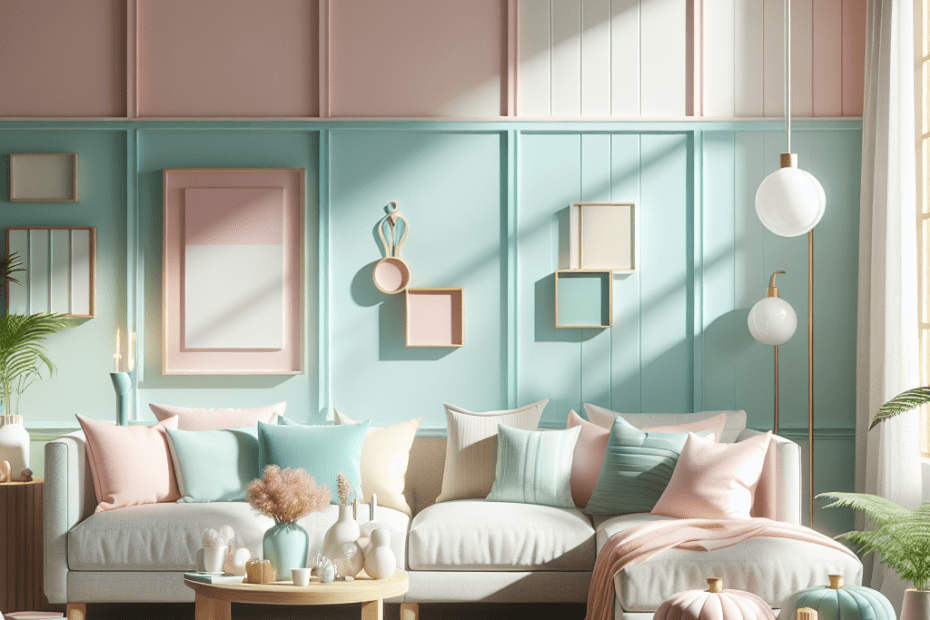“`html
Designing with Pastel Colors for a Soft and Airy Look
Many people are discovering the charm of using pastel colors in design for creating soft and airy spaces. These gentle hues have become increasingly popular because they evoke a sense of calm and serenity. Pastel colors, like light pink, baby blue, and soft lavender, add a delicate touch to any environment, making it feel inviting and peaceful.
Designers often choose pastels for their ability to transform rooms, brands, and digital spaces without overpowering the senses. By incorporating pastels, they can craft spaces that feel both fresh and classic. Let’s dive into how pastel colors can influence design and create the desired atmosphere.
Why Pastel Colors?
Pastel colors are not just for nurseries or children’s rooms. They have a sophisticated appeal that can be used in many contexts. According to Houzz Magazine, 67% of interior designers reported an increase in clients requesting pastel-themed rooms in the past year. This preference indicates a shift towards more calming and elegant home environments.
Pastels are known for their versatility. They can be paired with bolder colors to create contrast or combined with other soft hues for a harmonious look. The understated nature of pastels allows them to blend seamlessly, making spaces appear larger and more open.
A Soft, Airy Aesthetic
Designers strive for balance and harmony in their work, and pastel colors excel at creating spaces that breathe. The lightness conveyed by pastels gives an airy feel, much like a gentle breeze on a warm day. Rooms designed with pastels often feel calm and uncluttered, contributing to a stress-free environment.
Consider the calming effect of a mint green wall paired with cream-colored decor. This combination creates a soothing atmosphere, perfect for relaxation or reflection. With pastels, they eschew harsh contrasts in favor of smooth transitions between colors and textures.
Using Pastel Colors Strategically
Incorporating pastels into design isn’t just about picking a random shade and painting a wall. It’s about thoughtful integration of these hues in various design elements.
| Design Element | Suggested Pastel Usage |
|---|---|
| Walls | Use a single pastel color to create a serene backdrop. |
| Furniture | Select pastel upholstery for a subtle pop of color. |
| Decor | Incorporate pastel accents like pillows, rugs, or artwork. |
| Lighting | Opt for soft, warm lighting to enhance pastel tones. |
When using pastels, it’s crucial to consider lighting, as natural light complements pastel shades and further enhances their soft appearance. Pastels can look different under artificial lighting, so choosing the right light fixtures and bulbs is essential to maintain their soft appeal.
The Psychology of Pastel Colors
Pastel colors in design can also influence moods and emotions. According to Color Psychology, pastels are associated with attributes like calmness, relaxation, and happiness. Colors like soft pink are linked with warmth and compassion, while pale blues can create a sense of tranquility and calmness.
By understanding these associations, designers can tap into pastel colors to evoke specific emotions in a room. When used wisely, pastels can be more than just aesthetic tools; they can also serve as emotional agents that affect how one interacts with their environment.
Key Takeaways
- Pastel colors provide a soft and airy feeling in design, making them ideal for creating calming and serene spaces.
- With their gentle hues, pastels can be used strategically in different design elements for maximum effect.
- Lighting plays a significant role in how pastels are perceived, with natural light enhancing their softness.
- The psychological effects of pastels make them powerful tools for influencing emotions and moods.
FAQs
- Q: Can pastels only be used in home interiors?
A: No, pastels are versatile and can be used in branding, fashion, digital design, and more. - Q: Do pastels work well with darker colors?
A: Yes, pairing pastels with dark hues creates a pleasing contrast that can enhance both colors. - Q: Are pastels suitable for all seasons?
A: Yes, pastels can be adjusted to suit any season. For instance, light blues and greens are refreshing in summer, while softer pinks and lilacs add warmth in winter. - Q: How do they choose the right pastel color for their space?
A: Consider the room’s purpose, lighting, and existing color palette to find pastels that complement the overall aesthetic. - Q: Are pastels suitable for professional spaces?
A: Yes, pastels can create inviting and calm environments in offices, promoting relaxation and creativity.
In conclusion, harnessing the power of pastel colors in design allows for the creation of spaces that feel effortlessly appealing and soothing. Their soft tones and psychological benefits make them a valuable asset for designers aiming to craft environments of tranquility and grace.
“`
